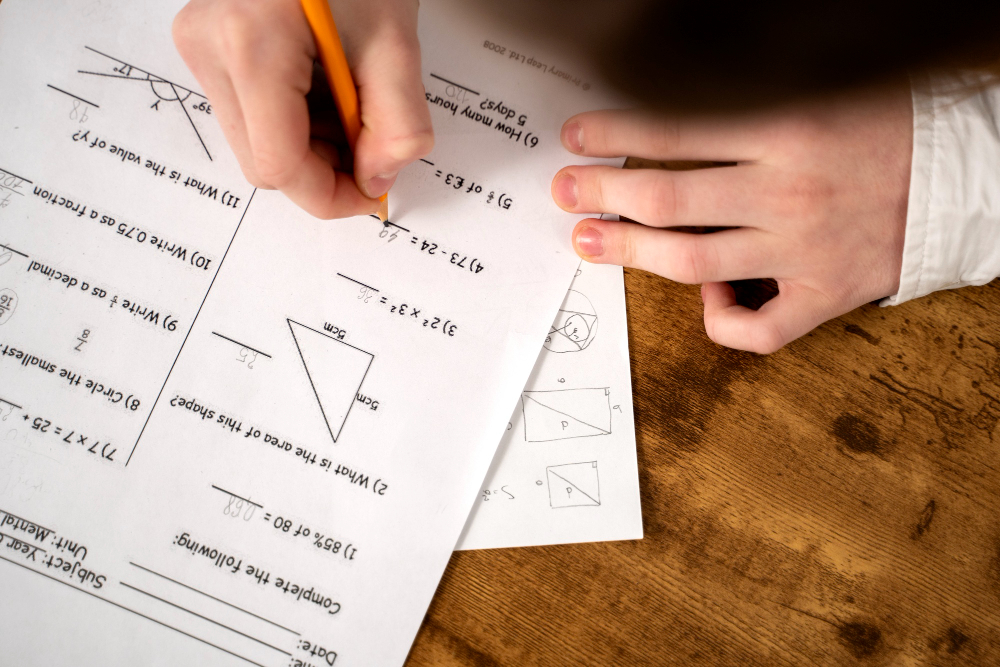
Geometry is the study of math that focuses on shape, size, position, and space. It is the basis of much of what we can see and use from buildings and maps to games and designs. And underlying geometry are three simple concepts: points, lines, and angles.
Let’s take them in turn in their most basic form.
What is a Point?
Point is the simplest geometric unit. It indicates a precise place in space with no width, depth, or size. A small dot only.
Points in diagrams are commonly represented by capital letters such as A, B, or C.
Example: The tip of a table or the period at the end of a sentence.
Imagine a point as a pin on a map, it shows you where something is but doesn’t occupy space.
What is a Line?
A line is a straight line composed of many points. It extends infinitely in both directions. Lines do not have thickness but have length.
There are three principal kinds:
- Line: Extends infinitely in both directions.
- Line segment: It possesses a beginning and an end point.
- Ray: Has a beginning but goes on indefinitely in one direction.
- Example: The border of a notebook (line segment) or a laser beam (ray).
Indicate that a line extends infinitely by using arrows. For line segments and rays, use dots or a single arrow.
What is an Angle?
An angle occurs when two rays intersect at the same point, the vertex. Angles assist in measuring turns, bends, and rotations.
Angles are measured in degrees (°).
Angle Types:
- Acute angle: Under 90°
- Right angle: Precisely 90°
- Obtuse angle: Over 90° and under 180°
- Straight angle: Precisely 180°
Example: Book corners (right angle) or the clock hands at 10:10 (acute angle). Use a protractor to measure angles correctly.
Why These Basics Matter
Understanding points, lines, and angles is the foundation of learning more advanced geometry concepts such as triangles, polygons, and circles.
The National Assessment of Educational Progress (NAEP) points out that students who establish solid spatial and geometric thinking skills early are better prepared in advanced math and science classes. Geometry enhances problem-solving and logical reasoning abilities required in every profession.
Where Do We Apply Geometry in Real Life?
- Architecture: Building houses and buildings
- Engineering: Constructing roads, bridges, and machines
- Art and Design: Making patterns, logos, and layouts
- Robotics and Coding: Designing movement and structure
- Navigation: Finding direction and distance with angles
- Even everyday tasks such as folding paper or rearranging furniture require basic geometry.
Easy Tips to Learn Geometry
- Draw it out: Pictures make you learn better
- Label everything: Clearly label points, lines, and angles
- Use real-life examples: Check around, geometry is all around
- Practice consistently: Short, frequent sessions are more effective than infrequent long ones
- View videos: Visual learning is strong with geometry ideas
Conclusion
Geometry is not only about figures and numbers. It’s about perceiving the world in clearer terms. When you grasp points, lines, and angles, you gain access to the basis of all geometric ideas.
Whether you’re a student just starting out or a parent helping with homework, mastering these basics will make everything else in math much easier.
Ready to make learning geometry fun and simple? Visit vistaslearning.com
